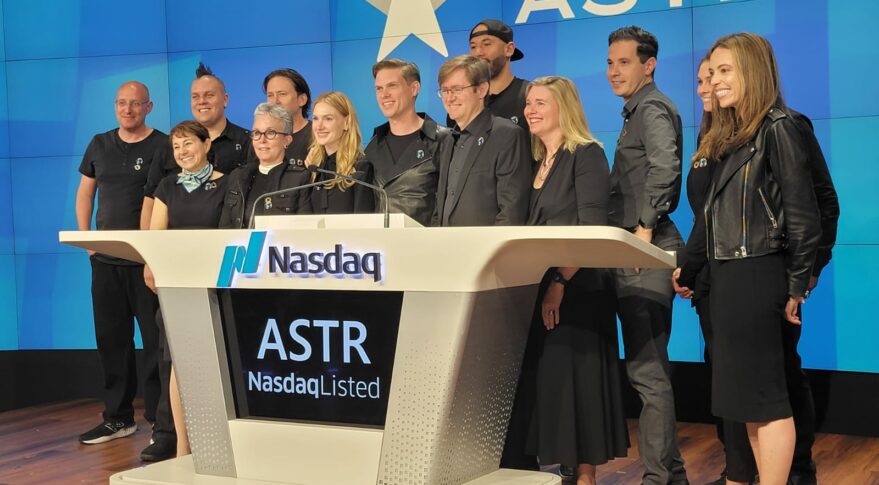Hello and welcome back to Max Q! Are you ready for TC’s Space event!? It’s happening tomorrow in Los Angeles. Give me a shout-out if you’ll be attending, I’d love to meet you.
In this issue:
- ICON’s in-space construction tech ambitions
- Astra’s management switch-up
- News from ispace, Metaspectral and more
ICON, a construction tech company that’s raised more than $400 million in funding, has landed a new contract from NASA to develop new systems to build on the moon and Mars.
The $57.2 million contract is a continuation of a previous Small Business Innovation Research (SBIR) dual-use contract with the U.S. Air Force, which was partly funded by NASA. This award will support the development of what ICON is calling “Project Olympus,” an ambitious plan to build structures on the moon and Mars using in-situ resources.
“To change the space exploration paradigm from ‘there and back again’ to ‘there to stay,’ we’re going to need robust, resilient, and broadly capable systems that can use the local resources of the Moon and other planetary bodies,” ICON CEO Jason Ballard said in a statement. It’s clear that NASA agrees. Indeed, the agency has explicitly stated that one of the goals of its ambitious Artemis lunar program is to establish a long-term human presence on the moon. But as of yet, NASA has established no clear plans on where those astronauts will stay once they get there.
If ICON has its way, that will soon change.
ICON’s vision for Olympus, the multi-purpose ISRU-based lunar construction system. Image Credits: ICON
Astra star hire Benjamin Lyon resigns, management team restructured
Space company Astra’s management team is undergoing another shake-up. The company said Friday that chief engineer Benjamin Lyon has resigned after just short of two years in the role. Rather than seek a replacement for that position, Astra promoted four key staff to management positions that will now directly report to CEO Chris Kemp and other C-Suite staff.
Astra hired Lyon in February 2021, after a two-decade-plus career at Apple. The move from consumer electronics to rockets may have been unconventional, but at the time CEO Chris Kemp was adamant that the company sought someone from outside the aerospace industry.
In an interview with TechCrunch, Kemp said it was a “very well-coordinated and collaborative transition.”
“[Lyon] hired a bunch of star players,” he said. “One thing that became pretty clear to all of us was the caliber of his team and the opportunity to elevate them onto our management team would really streamline things.”
Kemp added that Lyon had an opportunity to join a Fortune 500 company in a C-level position, and that at least two of the promotions — Giovanni Greco, who is now leading launch system delivery, and Jonathan Donaldson, who will lead Astra Spacecraft Engine delivery — were green-lighted around a month ago. The other promotions include Doug Kunzman to lead launch and test operations and Bryson Gentile to lead manufacturing.

The Astra team at Nasdaq. Image Credits: Astra
More news from TC and beyond
- Amazon Web Services successfully ran a software suite on a D-Orbit satellite, a 10-month experiment that could be a game changer for satellite data connections. (CNBC)
- AST SpaceMobile’s Blue Walker 3 demonstration satellite is now one of the brightest objects in the night sky. A major astronomical association expressed concern over the satellite’s brightness, and also how it may affect radio astronomy research in the future. (IAU)
- China’s Shenzhou-15 mission docked with the Tiangong Space Station, where the taikonauts conducted the first-ever crew handover. (Andrew Jones/Twitter)
- Phantom Space landed four task orders to launch four missions for NASA, under the agency’s Venture-class Acquisition of Dedicated and Rideshare launch contract program. The CubeSats will launch no earlier than 2024 per the contract. (NASA)
- Rocket Lab is establishing a subsidiary to handle business with American government and defense partners, called Rocket Lab National Security LLC. (TechCrunch)
- Sierra Space has hired Tom Marshburn, former NASA astronaut and head of ISS Medical Operations, as chief medical officer for its Human Spaceflight Center and Astronaut Training Academy. (Sierra Space)
- South Korea’s leader laid out ambitious plans to reach the moon by 2023 and Mars by 2045, adding that he would double the country’s space development budget in the next five years. (SpaceNews)
- SpaceX launched its 26th commercial resupply mission to the International Space Station, delivering solar arrays and other critical supplies to astronauts on board. (SpaceX)
- SpaceX’s Booster 7 completed a static fire test of 11 Raptor 2 engines from the launch pad in Starbase, Texas. (SpaceX)
- SynMax, a satellite data analytics startup, raised $6 million from customers to scale its team and build products for the energy and maritime industries. (SynMax)
- The U.S. Federal Aviation Administration reached its 500th licensed commercial space launch, a mind-boggling number for an industry that still feels oh-so-nascent. (FAA)
- The U.S. Federal Communications Commission has authorized SpaceX to launch and operate up to 7,500 next-gen Starlink satellites, a fraction of the 30,000 SpaceX proposed in its application. (Endgadget)
We’re offering Max Q subscribers free tickets to TechCrunch’s in-person space event. Find out more about the event and get your free ticket by clicking here.
Max Q is brought to you by me, Aria Alamalhodaei. If you enjoy reading Max Q, consider forwarding it to a friend.
Max Q: Building on the moon and Mars by Aria Alamalhodaei originally published on TechCrunch

